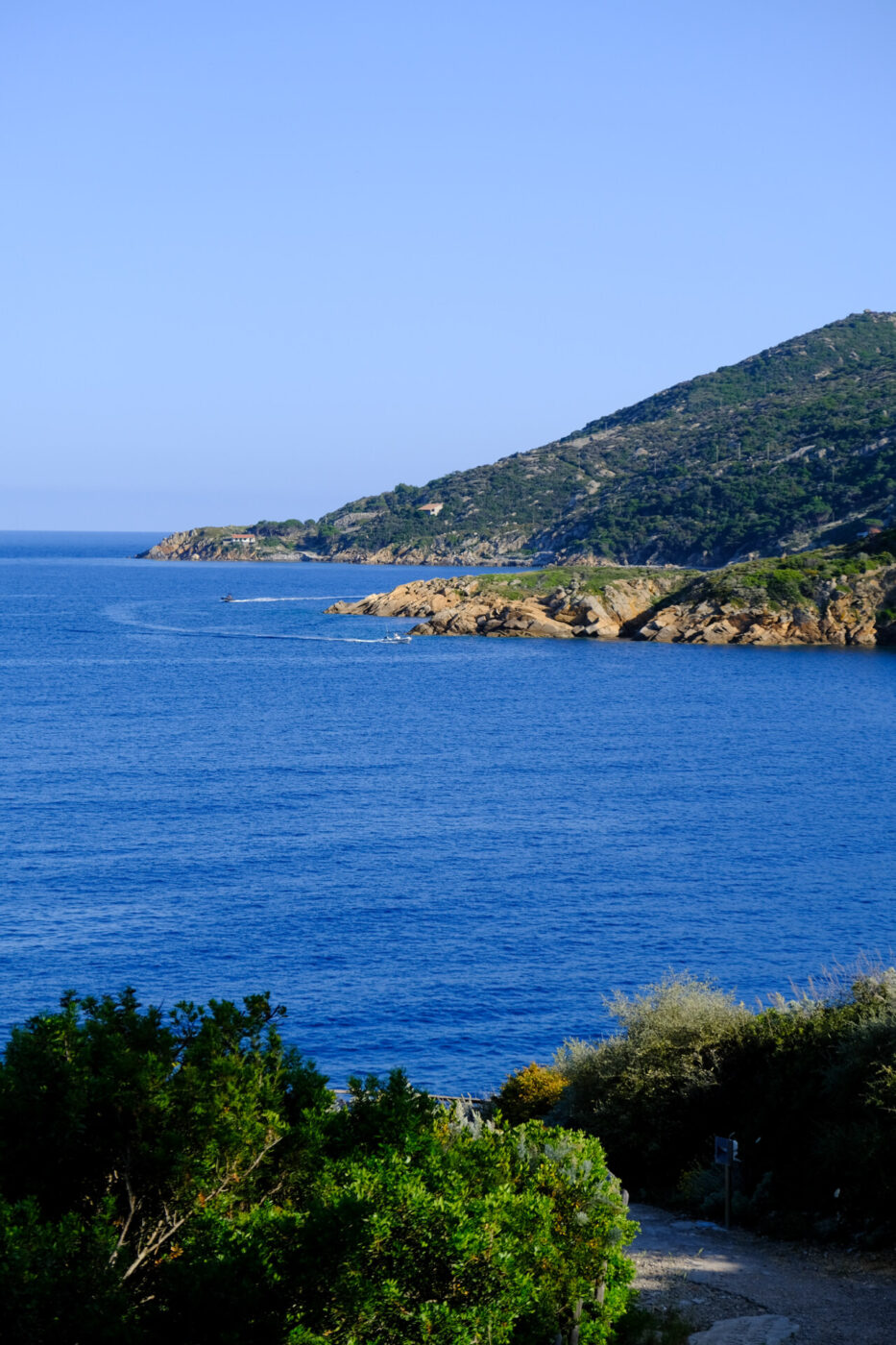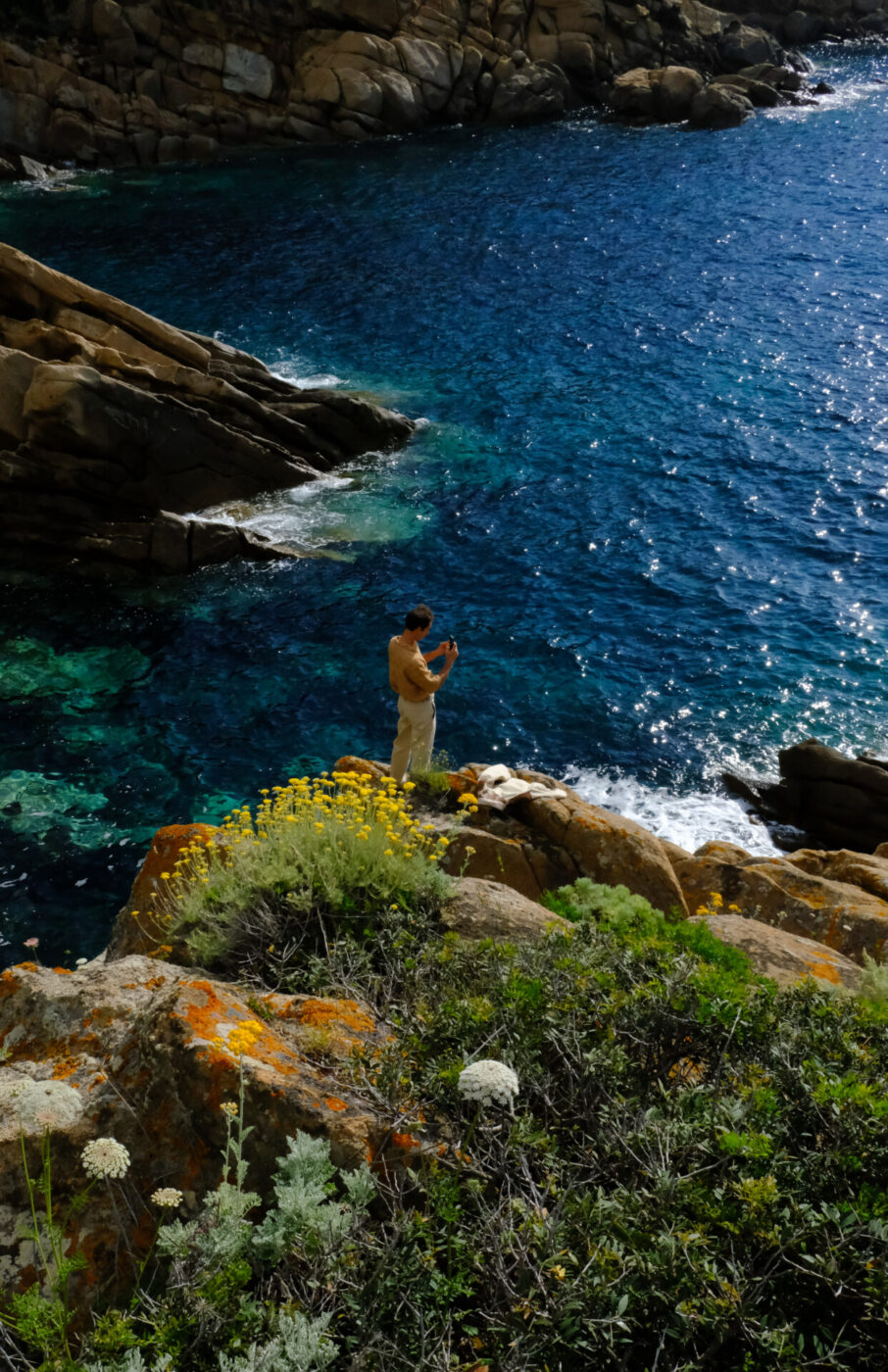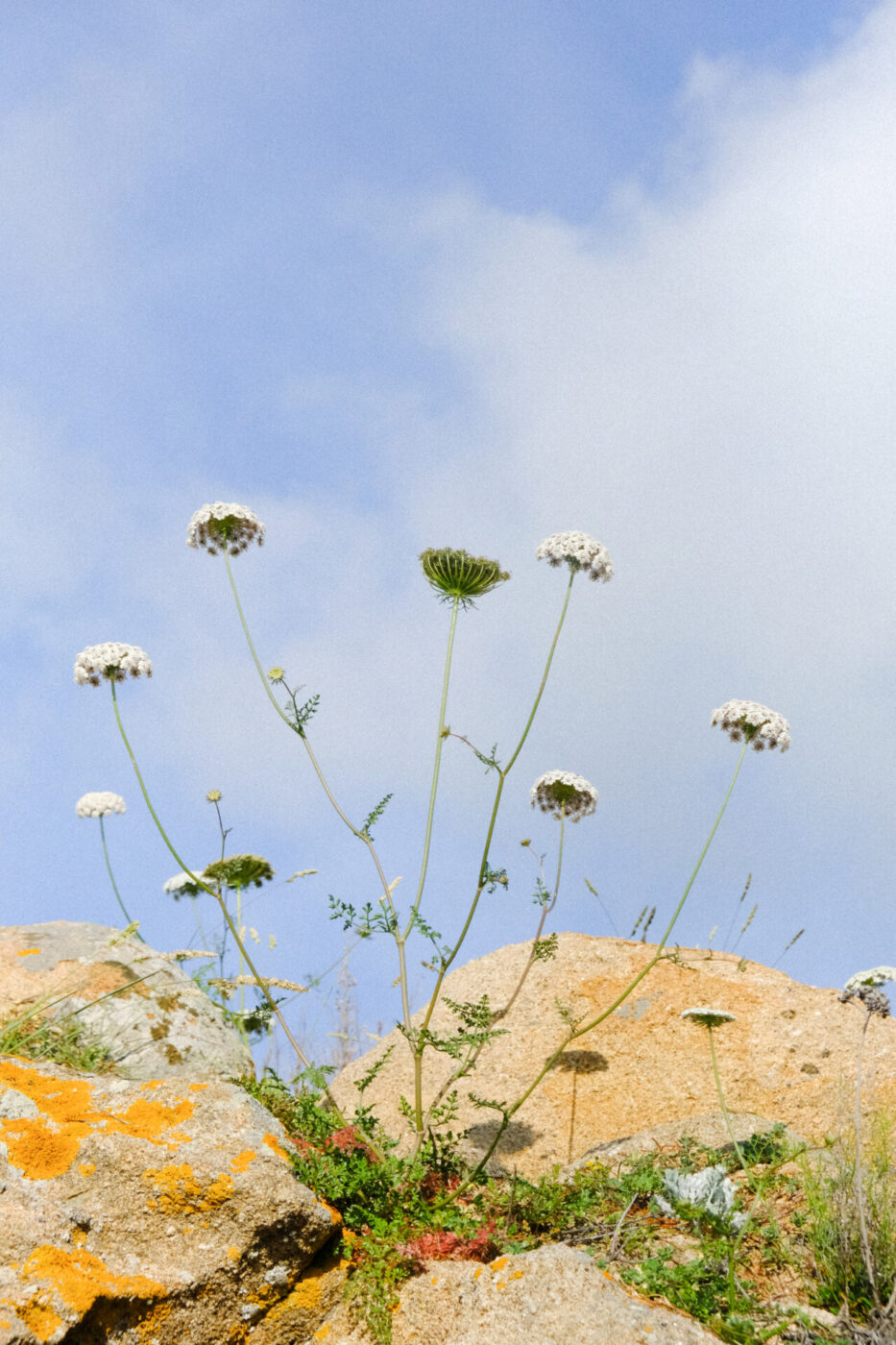Off the coast of Italian mainland in the center of the Tyrrhenian Sea lies the esoteric younger sister to the eminent Elba Island: Isola del Giglio. The second largest island of the Tuscan Archipelago, Giglio remains mostly untouched, allowing her to perpetuate mystery and setting the scene for a magical long-weekend escape from cities like Rome or Florence.
“I can confirm that Giglio is absolutely magical,” Flaminia Pérez del Castillo, owner and General Manager of La Guardia Hotel warned me, “And also quite dangerous, as many of our guests end up with plans to move to the island or buy a house here.” By the end of our trip, it was easy to see why.
The island’s history dates back to the Stone Age and, since then, she’s seen it all. From existing once as an Etruscan military base to suffering a domination of pirates so impactful that the Medici of Florence needed to repopulate the island, Giglio’s stories are deep-rooted and that of a survivor.
But throughout her iterations, she hasn’t detoured from her identity. A treasure trove of granite, grapes, flora, and fauna, Giglio is a natural beauty ripe with hand-cultivated wines, crystal-clear waters, panoramic hikes, and more. Any type of holiday a traveler is seeking can be found on Giglio Island, making it an underrated yet can’t-miss destination for Italians and tourists alike.
HOW TO GET THERE
From your home city, board an Italo or Trenitalia line train to Stazione di Orbetello-Monte Argentario. From there, a 20-minute bus ride will take you to Porto Santo Stefano (a bus comes every 15 minutes, so it’s hard to miss.) At the port, you can book your ferry to Giglio and reach the island in an hour. Ferries come and go regularly, so you can plan to arrive early in the morning or leave late at night if you’re hoping to spend an extra full day on the island.
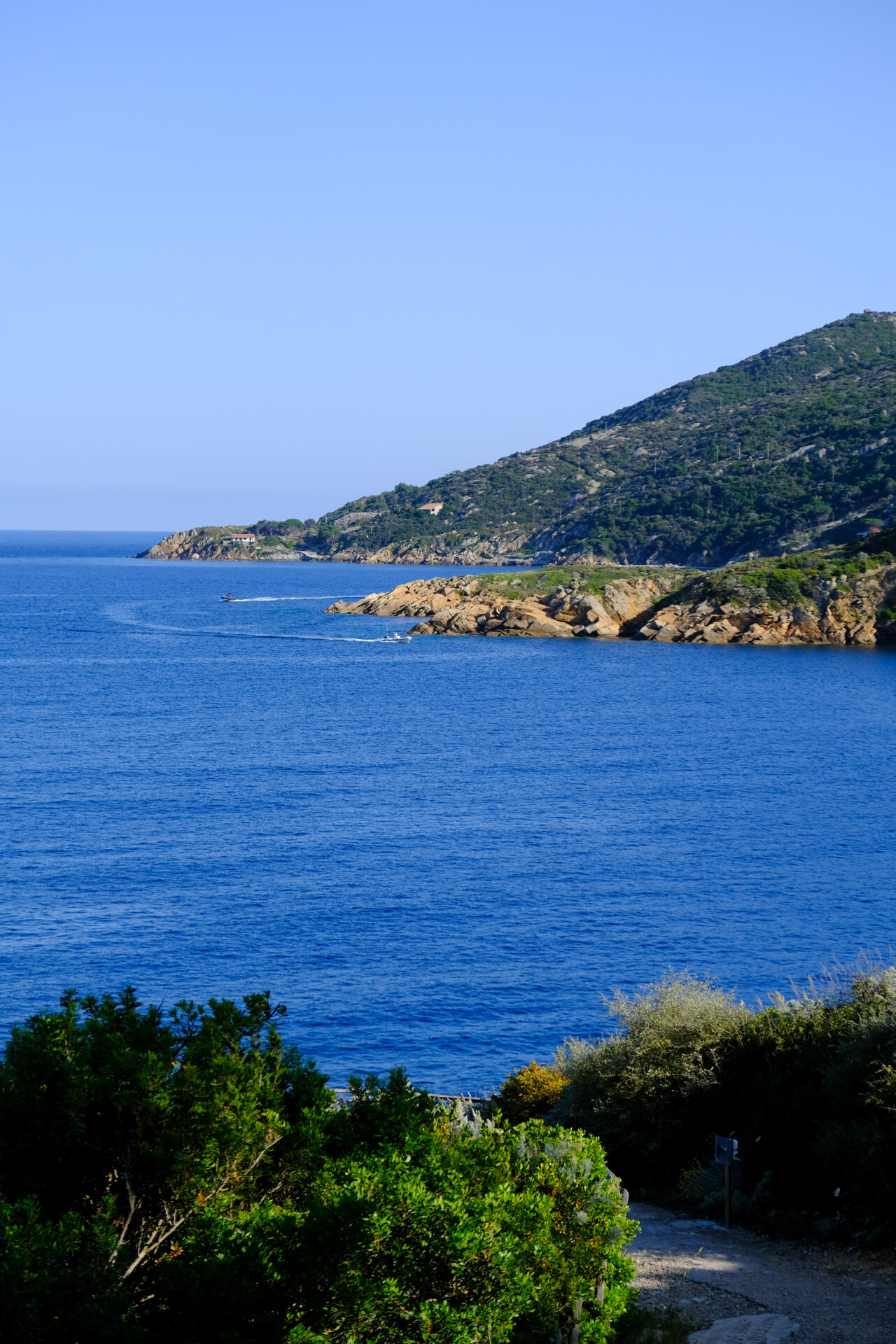
WHERE TO STAY ON GIGLIO
La Guardia, a boutique hotel overlooking the harbor, is a minimalist dream. Unlike other port cities, the port is exactly where you want to stay on Giglio Island, and La Guardia is only a three-minute walk away once you’ve deboarded the ferry.
The hotel sits on top of an ancient granite cave, granting views of both the picturesque port and the sea. Inside, the decor can be described as Estate Italiana ease anchored in Mediterranean escape, showcased by calming neutrals finding a perfect balance with robust textures. From wooden furnishings to seagrass accents to natural plants, your island-mode is activated before you’ve even stepped foot onto the beach (which–did I mention–is right outside?).
But what makes La Guardia a must-stay is the gracious staff. From the front desk to the bar to the turn-down service, the La Guardia team defined hospitality and went out of their way to ensure we had a well-rounded experience, from invitations to evening yoga to facilitating reservations to welcoming our dog with open arms as an additional guest.
Another great option is the 13-room Pardini’s Hermitage, a family-run agriturismo in the midst of the island and a little oasis within an oasis. A family summer house turned into a guest house, initially for friends and family and now open to all who are looking for “sun and sea in peace and freedom.” Pardini is a place open to all but not for all, situated on a rocky cove on the south-east side of Giglio Island, the property is 20 min away from the port and only reachable by boat.
WHAT TO SEE ON GIGLIO
Borgo del Giglio Castello – In the highlands of the island, about 400 meters up, lies the castle of Giglio. Once the primary housing of the original Gigliese people, the 12th-century Castello evolved into a military base used to defend the island during the rule of the Roman Empire. Later, it was used as a fortezza to protect the island’s inhabitants from pirate attacks. And now, Giglio Castello has returned to its primary purpose, serving as one of the three main villages for the island’s residents.
Even driving up to the Castello is an experience in and of itself: on a clear day, you can spot the islands of Giannutri, Elba, and Corsica, a humbling and breathtaking view.
Vineyards – Since the island’s beginnings, wine cultivation was an innate skill for the Gigliese, proven by the man-made, amphitheater-style structures that overrun the landscape. What’s so unique about the wine produced on Giglio Island is the way in which it’s cultivated: all by hand.
This skill has been passed orally from generation to generation, allowing Giglio to make a name for itself in the wine world. Considering the steep climb to reach the vineyards, wine cultivation by hand on Giglio Island all the more impressive and production that much more limited, making the wines from the island rare and special.
The primary grapes from Giglio Island are the white ansonica variety. Throughout our trip, we exclusively enjoyed Fontuccia wines; their vineyards lie on the steep landscape overlooking the sea and are only reachable by foot. The harvest–true to Gigliese wine-production history–is only manual, which inspired the name of their first wine, “Senti Oh!” which can be translated to “heroic.”
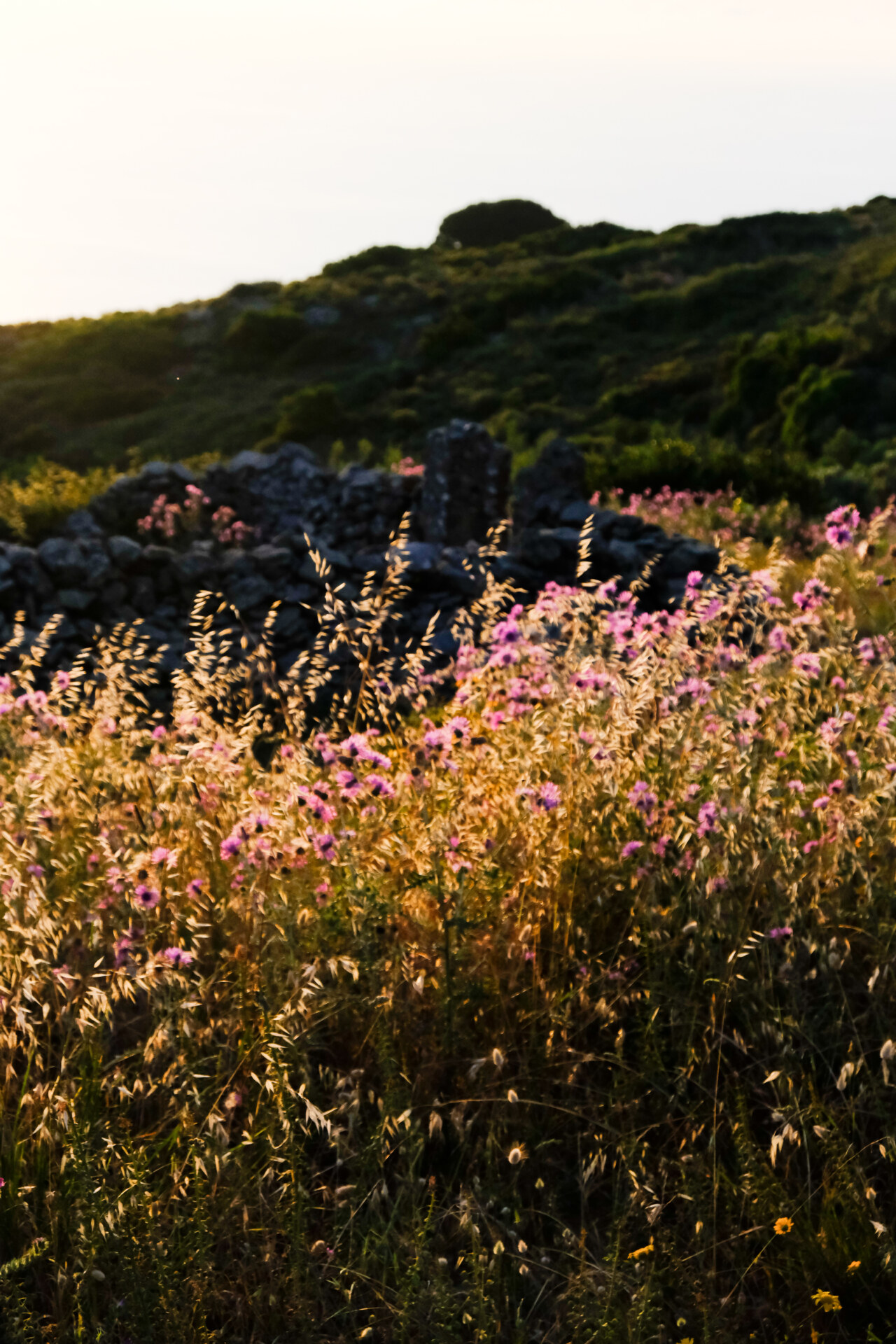
WHAT TO DO ON GIGLIO
Beach Hop – A hike or short drive away from your base at the port are the three most beautiful beaches on the island: Le Cannelle, Le Caldane, and L’Arenella. These beaches boast the perfectly-spaced colorful and open umbrellas: the indication that Italian summer has commenced.
Le Cannelle and Le Caldane, just right of the port, are close enough to each other that both can be visited in a day. Though Le Cannelle can be reached by car, a hike (with spectacular views of the bays, cliffs, and coastline) is necessary to reach Le Caldane.
The sand–white, smooth, and pristine–is a hallmark of Giglio Island’s beaches. When it meets the water, creating a swirl of deep navy and sparkling turquoise, it allows for a clear enough view to see that you’re swimming alongside the island’s sea life.
Rent a Boat – Renting a boat is a sure way to view the entire island, which is only 20 square kilometers. Anchor at L’Arenella or in one of the many secluded coves before diving into the water, tepid, and inviting. (We rented through the small business Relaxing Boat, Isola del Giglio).
Additional aquatic experiences are readily available, and small businesses hosting scuba diving and snorkeling excursions can be found within the port.
Rent E-bikes (at Giglio Porto, right by Bottega di Angiolino) – It’s the best way to explore the whole island by land.
WHAT TO EAT & DRINK ON GIGLIO
Ristorante Da Maria in Castello – For the incredible views and sunset (on clear days look out for the island of Montecristo); the food is as good as its views. Absolute musts are the calamari alla gigliese, the caponata of octopus, and the tuna tacos.
Da Ruggero – On the port’s boardwalk, this spot is great for a simple homestyle meal with a fun environment.
Faro di Punta Fenaio – A secluded authentic late ‘800 Lighthouse suspended between sky and sea. The setting–and fresh seafood–are truly unbeatable.
Arenella’s Beach Club – Enjoy the beach and a great bagno restaurant. At lunch, you must order the spaghetti allo Spruzzo di Balena.
Bar Pierina – Perfect for your daily dose of people watching, morning coffee, and evening aperitivo.
Forno di Cristina – Hands down the best bakery on the island! Go for their local apricots and homemade prune jam crostata, their variety of cantucci, and the typical pizza gigliese, pizza filled with caramelized onions, anchovies, and tomatoes.
Alimentari da Rosita – A small alimentiari (food shop) run by a husband and wife team and filled with local delicacies, from home made jam to local olive oil to wine.
Macelleria da Franco – This one-man-show butcher shop churns out perfectly roasted chicken and potatoes, roast beef, sausages, porchetta, and much more. All local and too good to be true. Trust your senses and let the scent coming from this hidden small butcher shop lead your way to it.
“The Seafood Truck” – You can buy the catches of the day from the all-white truck down by the port from 8 AM to 10:30 AM.
Pack a Picnic – Dining options on the secluded beaches can be limited, so it’s never a bad idea to pack a picnic with pizza, sandwiches, and snacks from the port area before heading out for the day.






